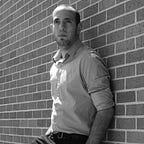Muscle Function and Ageing
Sorry it’s been a while, y’all. I had a pretty major move and other life things happen. Hopefully things clear up again.
So, I have a question to start off this post. What is the most significant risk factor for chronic disease (cancer, diabetes, neurodegerative disease, cardiovascular disease, etc.), morbidity, hospitalization, and mortality?
Age.
That kinda sucks, right? You can’t really do much about ageing. You’re going to get old no matter what; and even IF time travel becomes a thing, your body would still age in a chronologically-forward, only the environment around you would change. Sucks to suck, I guess.
Alright, alright. So we can’t change the way we age, but there is some evidence that not everything about ageing has to lead to the development of disease, hospitalization, or morbidity (sorry, I think mortality is firmly eminent). More specifically, there is quite a bit of evidence that loss of muscle function is not quite as impacted by ageing as originally thought.
Sarcopenia, or the loss of muscle tissue due to ageing, is a pressing issue in older adults (note: some may say dynapenia, or the loss of muscle strength and function, is more of an issue; I don’t disagree, but I’m going to focus on sarcopenia because it is far more broadly applied). It’s highly correlated with hospitalization and death, and is often an underlying condition in a host of diseases that contributes to further exacerbation of the disease symptoms. So, what causes sarcopenia, and what is there to do about it?
There’s some good news and bad news. The bad news is that some muscle loss does seem to be accompanied with age itself, meaning that after you hit about 35 there isn’t much you can do about losing some muscle mass relative to the population in their 20’s.
To clarify, this doesn’t mean that a sedentary 50 year-old won’t be able to make gains if they begin exercising, it just means that they won’t gain as much muscle as they would if they started exercising in their 20's.
The good news is that there is a way to make the age-related loss of muscle as minimal as possible: exercise.
It’s fairly undisputed that there is a large loss of muscle size and function induced by sedentary activity. Sitting down and avoiding exercise is no bueno. Loss of muscle size, mitochondrial density, mitochondrial function, etc. is all a consequence of physical inactivity, and can lead to some pretty bad things if maintained over a long time. However, if a person maintains a regular exercise routine, there seems to be a decent maintenance of muscle function and mass. There are two pretty cool studies that support this notion:
St-Jean-Pelletier et al., 2017 and Distefano et al., 2018
For the most part, these two studies independently investigated the impact of regular exercise on age-induced sarcopenia. Now, it’s important to remember that these studies aren’t longitudinal (i.e. they didn’t follow the same group of people over the course of decades, that would be insane), but they did the next best thing: compared several groups using some pretty intense methods.
In short, SJP compared 6 groups: Young active, middle-age active, middle-age sedentary, old active, old sedentary, and old pre-frail. Distefano looked at young active, old sedentary, and old active. What the two studies both found was that ageing has some role in the loss of muscle size and function, but that exercising was largely able to maintain both size and function compared to inactivity.
Moreso, older adults who were regularly active were able to prevent the age-related increase in intramuscular adipose tissue, and maintain mitochondria health throughout their lifetime.
The most powerful thing about these two studies is that they combine methods that look at muscle health in living functioning muscle (using MRI techniques) and muscle samples taken from these subjects. The combination of these methods is extremely novel because it allows for both the “big picture” idea of how the intact muscle functions as well as the cellular mechanisms that are directly involved in the changes in muscle. It allows us to see both the forest and the trees.
In short, exercise is absolutely crucial to maintaining proper muscle function in ageing. While we may not be able to achieve total immunity from the consequences of ageing, we are much able to prevent the loss of muscle function and disease though chronic exercising. For dieting, well, that’s yet to be determined.
